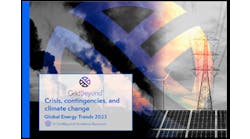NRDC’s David Goldstein explains why invisible energy, or energy efficiency, deserves some of the credit for the improving economy and low oil prices.
This week Paul Krugman writes: “Suddenly, or so it seems, the U.S. economy is looking better… at this point the signs of improvement — job gains, rapidly growing G.D.P., rising public confidence — are unmistakable…”
Krugman offers his assessment to explain President Obama’s rising approval rating: “How much influence does the occupant of the White House have on the economy, anyway? The standard answer among economists, at least when they aren’t being political hacks, is: not much. But is this time different?”
Update: The Energy Information Administration is reporting that gasoline prices have fallen for 16 weeks, the longest consecutive drop since 1995.*
Dr. Krugman then proceeds to a 40,000 foot overview of the economy, focusing on the Fed and its interest rate policy, on the President’s economic stimulus, on overall job creation and inflation, and other high-level indicators that do not notice important changes that happen at ground level. He concludes that President Obama has significantly helped the economy recover, using these metrics.
There are a couple of metrics that he is overlooking, however.
Energy efficiency policy, for one. I observed in 2009 that there were seven factors that caused the Great Recession that liberal economists such as Krugman and conservative economists alike agreed on. I showed in my book Invisible Energy how weak energy efficiency policy over the previous 35 years had contributed deeply to all of these factors and was a dominant influence in the more important of them.
I argued that without more aggressive efficiency policy any economic recovery would be self-extinguishing. And the Obama Administration mostly agreed. Under Energy Secretaries Steven Chu and Ernie Moniz, the Department of Energy issued more (and stronger) appliance efficiency standards than any previous administration.
These standards are estimated to save consumers more than $425 billion over the next 30 years. These savings boost the economy in two ways: by putting more money in our pockets which contributes to our ability to spend (or save) more, and by generating jobs that are needed to serve that increased spending. .
At the same time the Obama Environmental Protection Agency issued fuel economy standards for automobiles that save consumers another $1.7 trillion, and standards for medium and heavy-duty trucks that save businesses some $350 billion for the first round of standards and probably about another $350 billion for the second round currently being proposed.
All these standards together save over $2.75 trillion and generate almost a million new jobs.
Those standards, finalized in various years throughout the Obama Administration, did not take effect immediately: industry was given time to comply with them. But now in 2015 we are starting to see the effects, and they are turning out to be important:
Electricity consumption stopped growing in 2007. Even in the face of population growth and economic growth, at least after 2008, electricity consumption is steady and projected to remain so indefinitely even assuming no further improvement in codes or standards, and no further reform of utility regulation to align utility investor interests with the interests of customers.
Other favorable energy efficiency outcomes
Not all energy efficiency actions proceed from the U.S. federal level: some are due to policies taken at the state or local level, and others result from shifts in consumer preference. As a result of this combination of factors (and other factors not discussed here), demand for gasoline is down so much that oil prices by the barrel are dropping. As of this writing they are below $50 a barrel – about half of last year’s level. (Part of this reduction is due to increased automobile efficiency standards in other countries, such as China.)
A significant part of this reduction in demand is that the number of miles that Americans drive their cars peaked in 2007. This is hard to attribute to policy, but three factors can be seen to lead to this result. The first is a shift in market preference by the Millennial Generation. This group drives cars significantly less than their parents’ generation did at the same age. Second, a major source of demand for driving–suburban sprawl home construction was stopped dead in its tracks by the mortgage meltdown of 2007-8 and has yet to recover. And third, a number of cities, and the State of California, have revised their land use and transportation policies to reduce automobile traffic by offering better alternatives.
Of course, some of the oil price decline is due to a glut of supply. But financial expert Burt White was quoted in the San Francisco Chronicle observing that “[t]he lower that oil prices go, the more it reinforces that…perhaps this is more of a demand issue than a supply issue.”
So as we look at how much influence the Obama Administration had on America’s recovering economy, we should pay attention to the role of energy efficiency in making this progress. And look for further efficiency opportunities to enhance the economic recovery.
David Goldstein is NRDC’s Energy Program Co-Director, San Francisco. This blog originated on Switchboard, the Natural Resources Defense Council staff blog.






